Abstract
In discussing the role of physicians in workplace drug testing programs, I focus on the recent Department of Transportation regulations that require drug testing in such regulated industries as interstate trucking, air transportation, mass transit, and the railroads. These regulations require that applicable drug testing programs employ physicians as medical review officers to evaluate positive tests that have been screened and confirmed by different techniques to determine if there is a legal medical explanation for the result. The drug testing program tests for the presence of amphetamine, cocaine, tetrahydrocannabinol, opiates, and phencyclidine. If an employee testing positive has an acceptable medical explanation, the result is to be reported as negative. Little practical advice exists for medical review officers, and they must be aware of key elements of the regulations and potential trouble spots.
Full text
PDF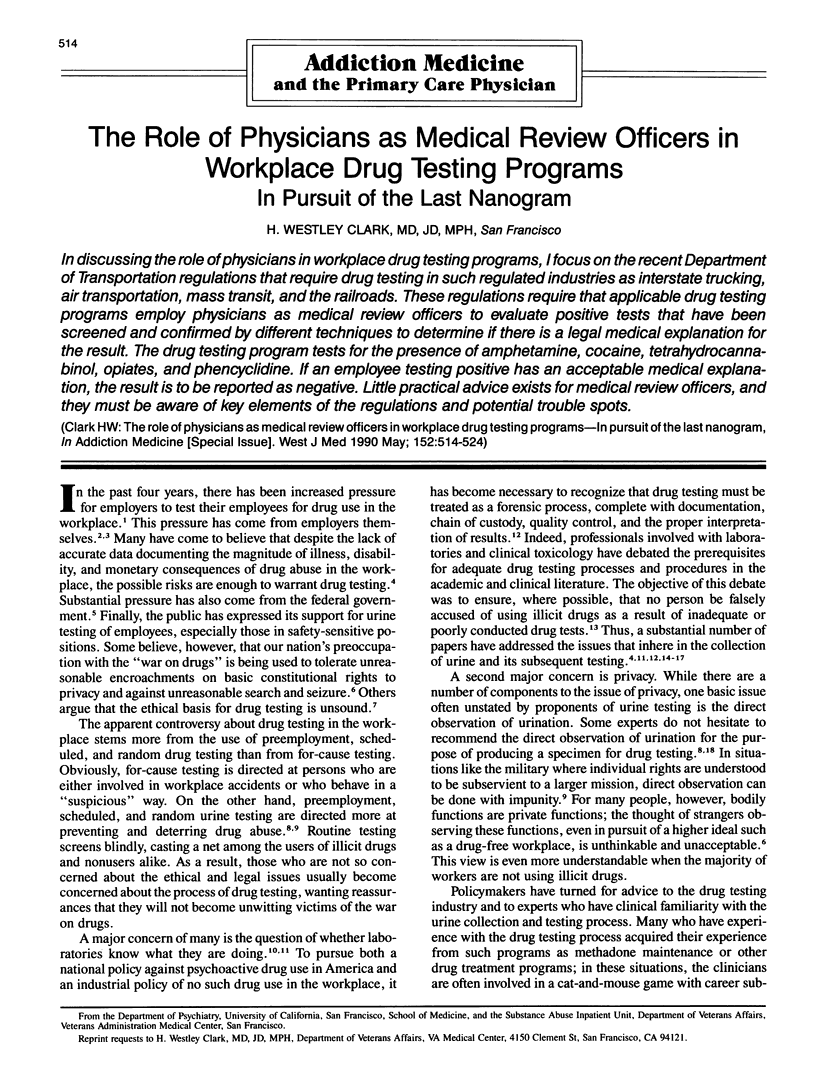
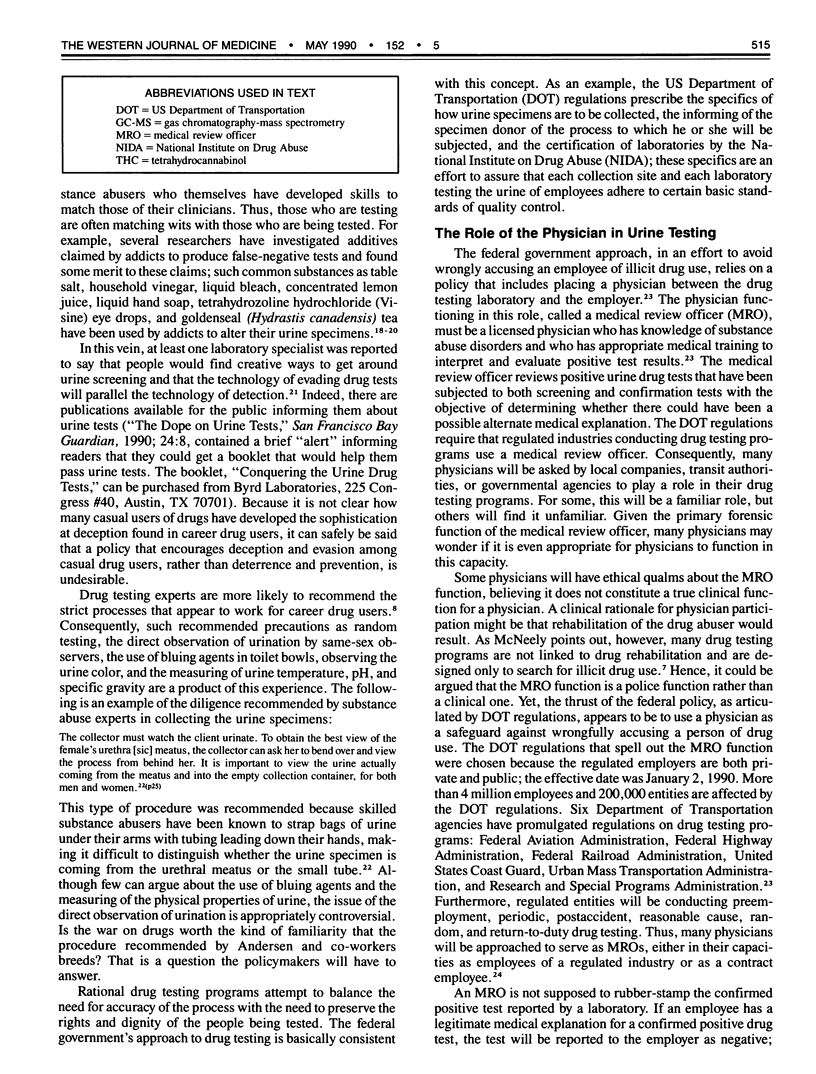
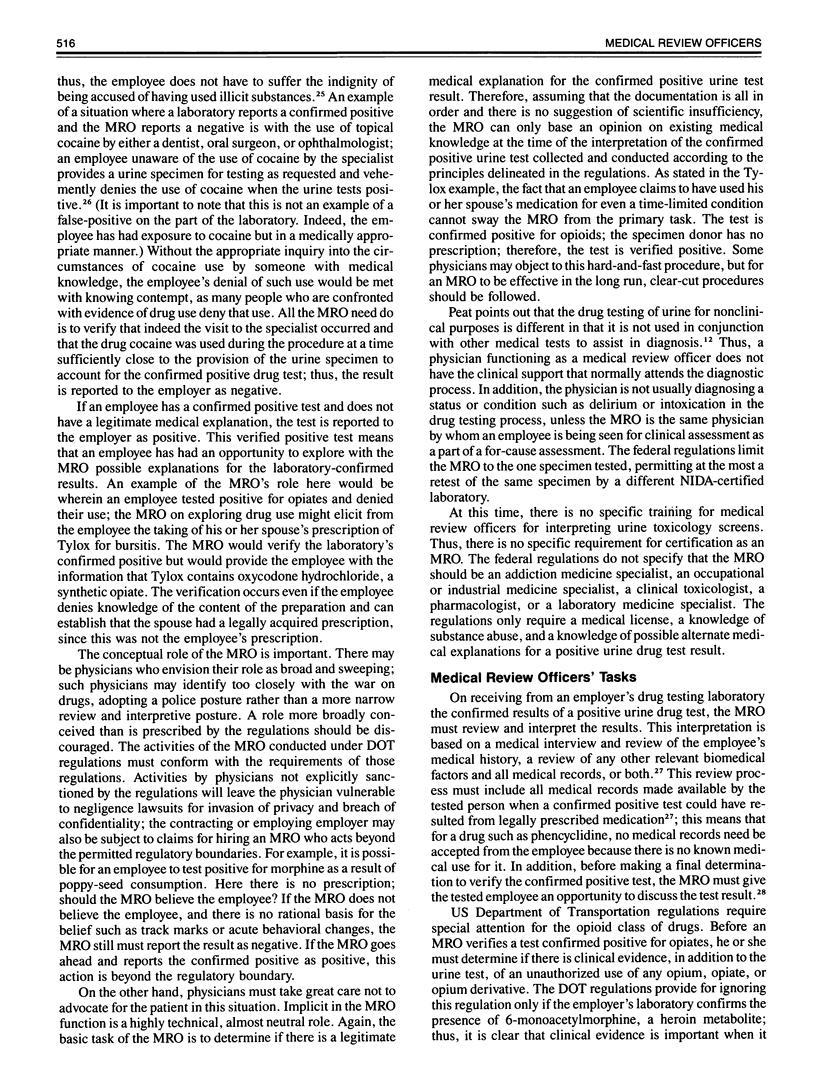
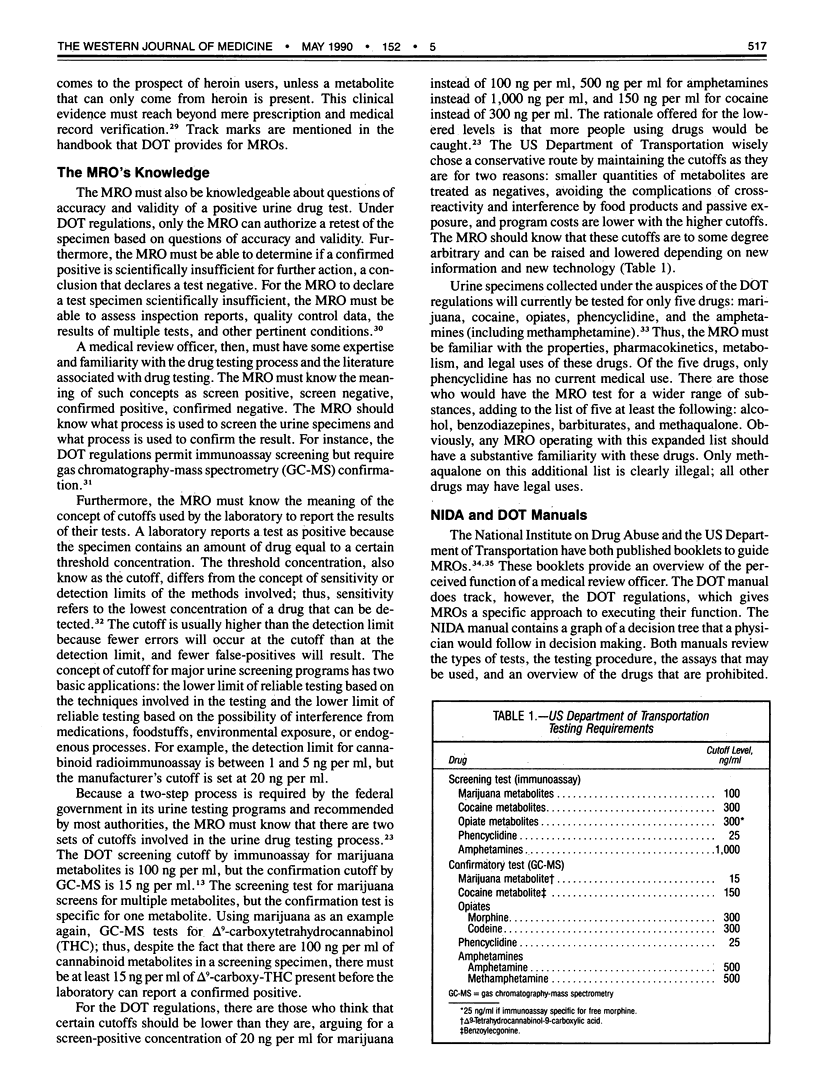
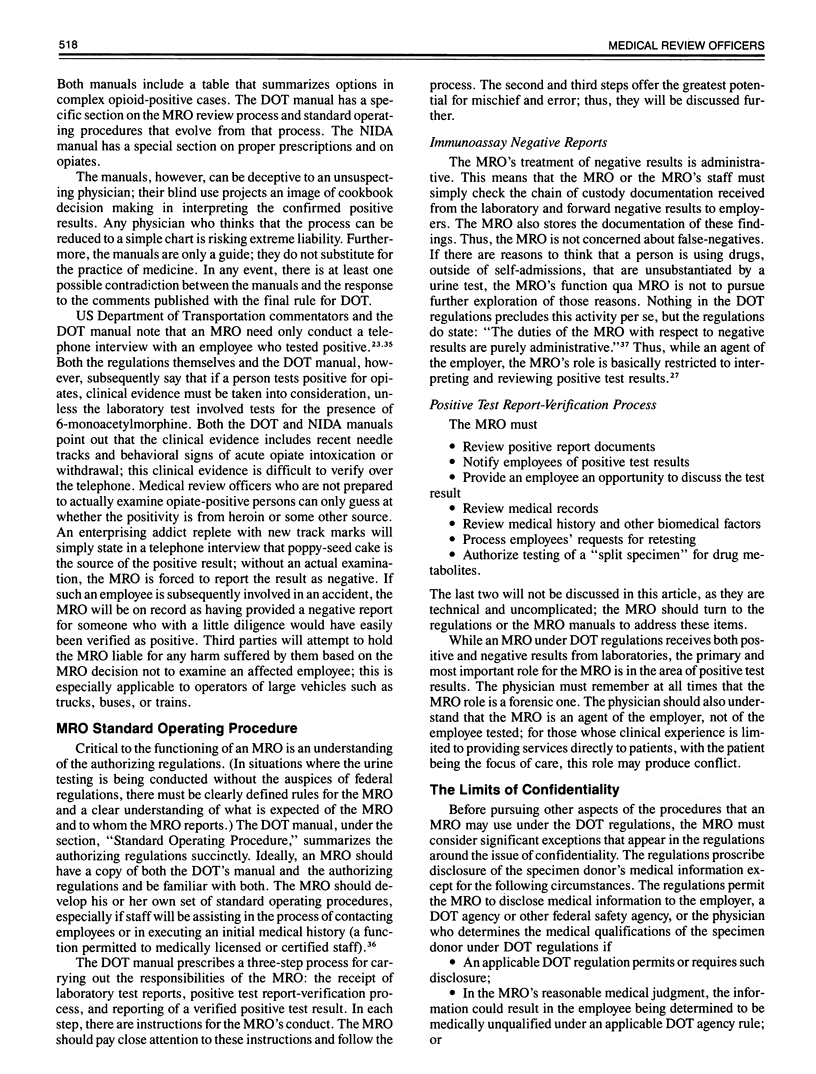
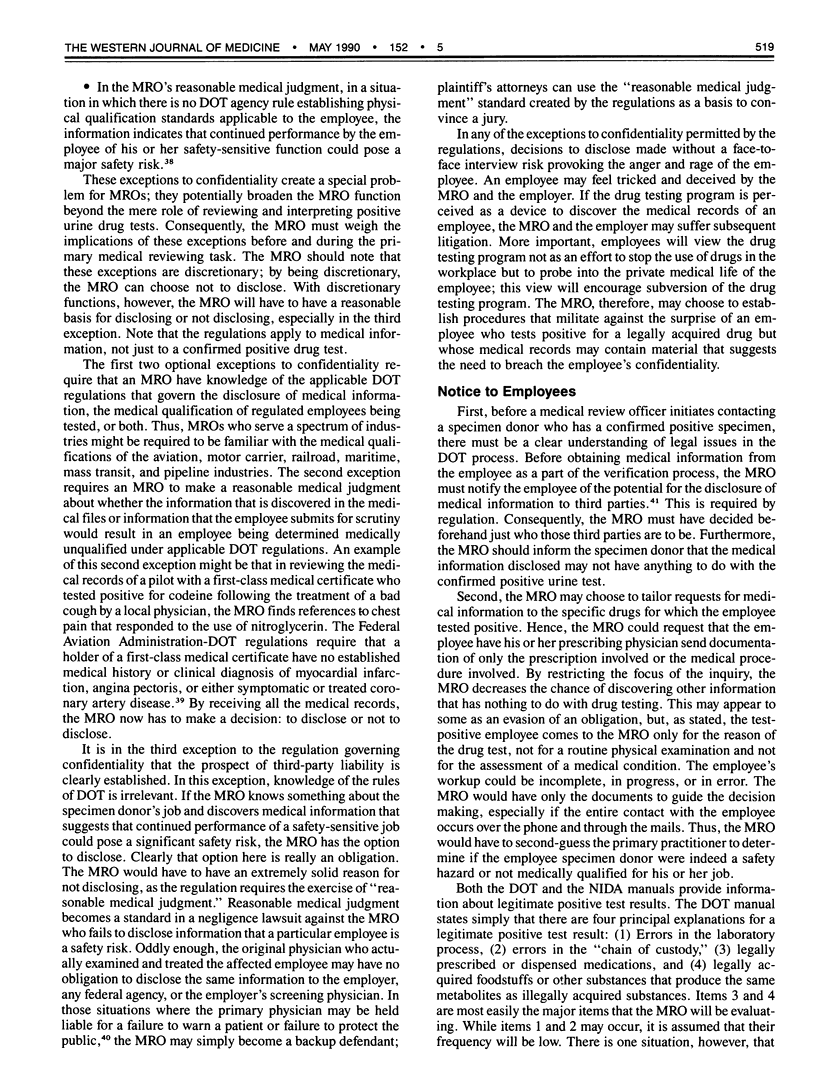

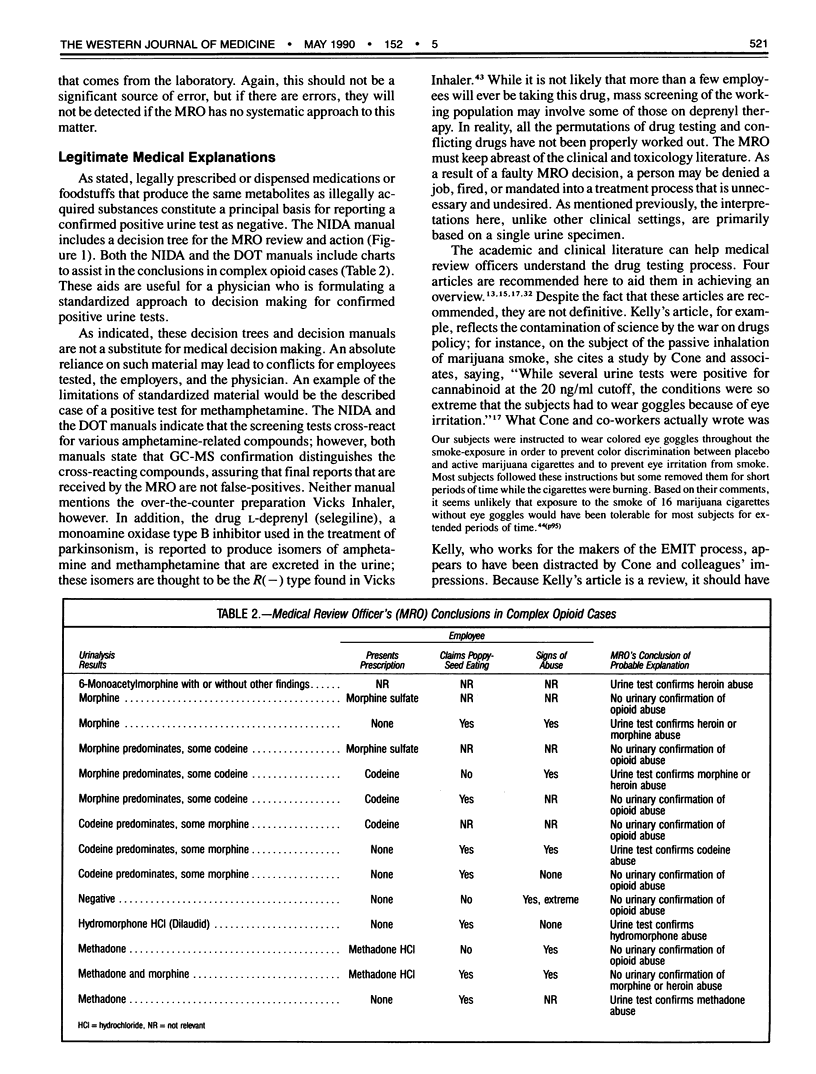
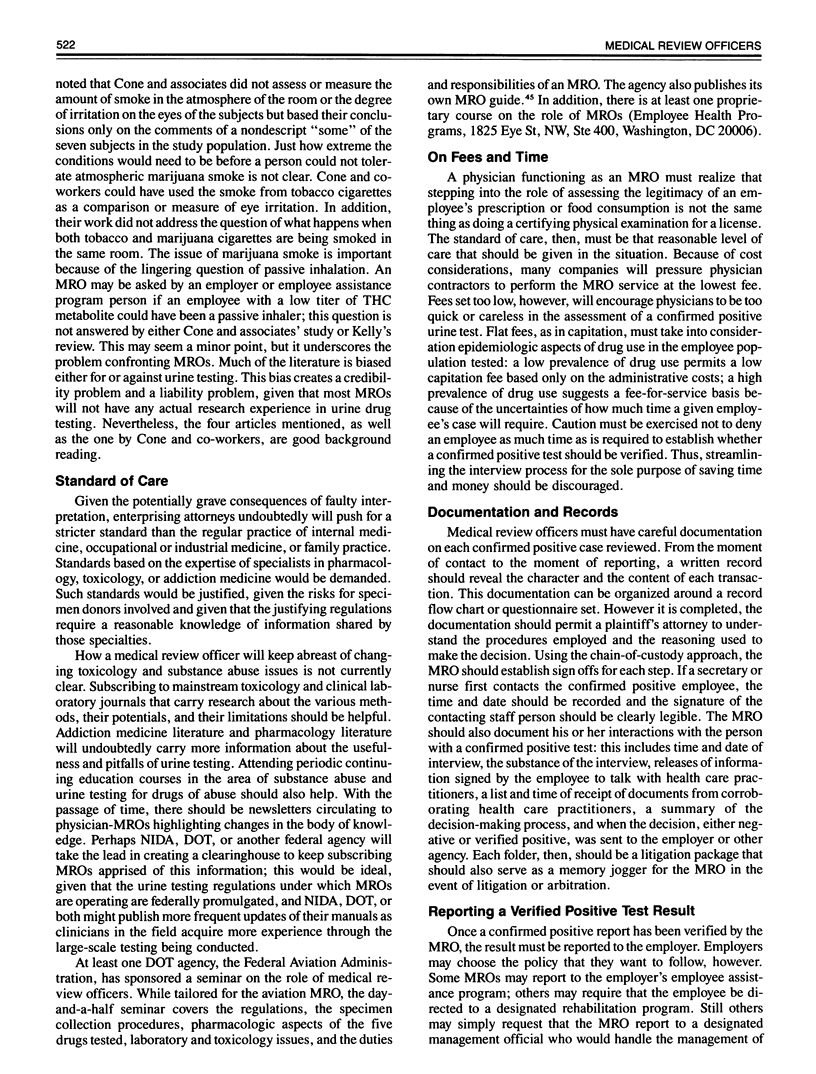
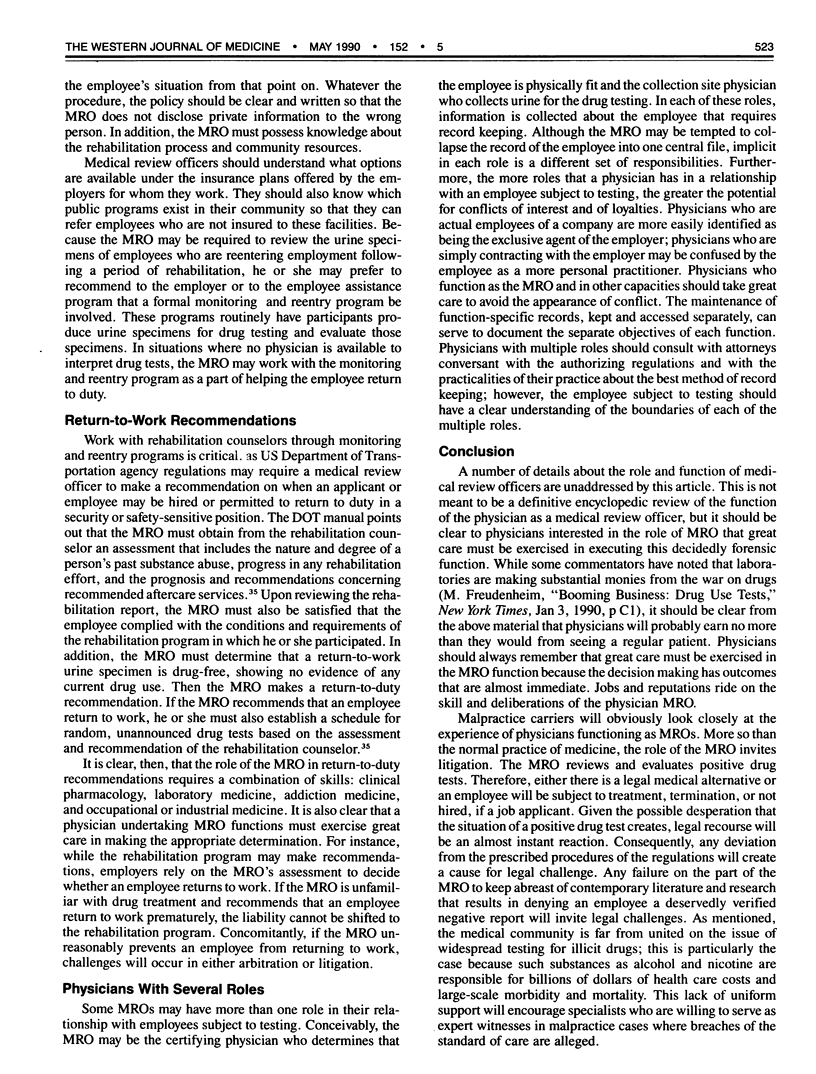
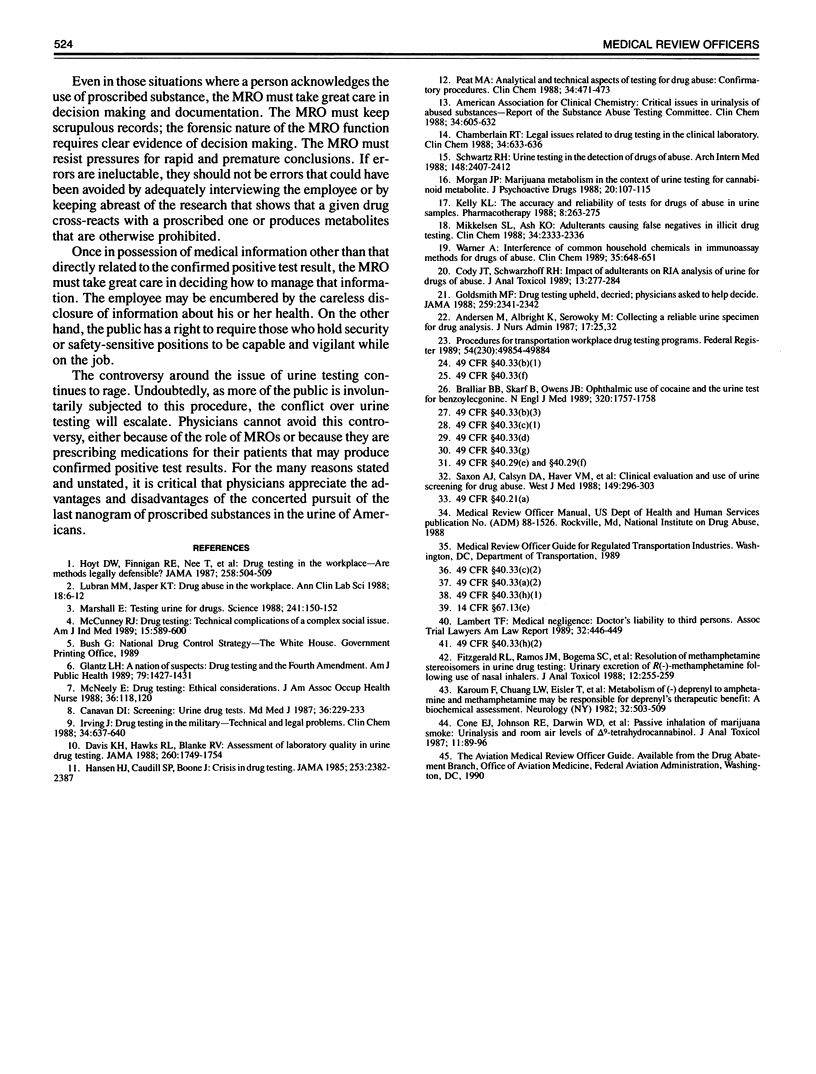
Selected References
These references are in PubMed. This may not be the complete list of references from this article.
- Andersen M., Albright K., Serowoky M. Collecting a reliable urine specimen for drug analysis. J Nurs Adm. 1987 Jan;17(1):25–32. [PubMed] [Google Scholar]
- Bralliar B. B., Skarf B., Owens J. B. Ophthalmic use of cocaine and the urine test for benzoylecgonine. N Engl J Med. 1989 Jun 29;320(26):1757–1758. doi: 10.1056/nejm198906293202619. [DOI] [PubMed] [Google Scholar]
- Canavan D. I. Screening: urine drug tests. Md Med J. 1987 Mar;36(3):229–233. [PubMed] [Google Scholar]
- Chamberlain R. T. Legal issues related to drug testing in the clinical laboratory. Clin Chem. 1988 Mar;34(3):633–636. [PubMed] [Google Scholar]
- Cody J. T., Schwarzhoff R. H. Impact of adulterants on RIA analysis of urine for drugs of abuse. J Anal Toxicol. 1989 Sep-Oct;13(5):277–284. doi: 10.1093/jat/13.5.277. [DOI] [PubMed] [Google Scholar]
- Cone E. J., Johnson R. E., Darwin W. D., Yousefnejad D., Mell L. D., Paul B. D., Mitchell J. Passive inhalation of marijuana smoke: urinalysis and room air levels of delta-9-tetrahydrocannabinol. J Anal Toxicol. 1987 May-Jun;11(3):89–96. doi: 10.1093/jat/11.3.89. [DOI] [PubMed] [Google Scholar]
- Davis K. H., Hawks R. L., Blanke R. V. Assessment of laboratory quality in urine drug testing. A proficiency testing pilot study. JAMA. 1988 Sep 23;260(12):1749–1754. [PubMed] [Google Scholar]
- Fitzgerald R. L., Ramos J. M., Jr, Bogema S. C., Poklis A. Resolution of methamphetamine stereoisomers in urine drug testing: urinary excretion of R(-)-methamphetamine following use of nasal inhalers. J Anal Toxicol. 1988 Sep-Oct;12(5):255–259. doi: 10.1093/jat/12.5.255. [DOI] [PubMed] [Google Scholar]
- Glantz L. H. A nation of suspects: drug testing and the Fourth Amendment. Am J Public Health. 1989 Oct;79(10):1427–1431. doi: 10.2105/ajph.79.10.1427. [DOI] [PMC free article] [PubMed] [Google Scholar]
- Goldsmith M. F. Drug testing upheld, decried; physicians asked to help decide. JAMA. 1988 Apr 22;259(16):2341–2342. [PubMed] [Google Scholar]
- Hansen H. J., Caudill S. P., Boone D. J. Crisis in drug testing. Results of CDC blind study. JAMA. 1985 Apr 26;253(16):2382–2387. [PubMed] [Google Scholar]
- Hoyt D. W., Finnigan R. E., Nee T., Shults T. F., Butler T. J. Drug testing in the workplace--are methods legally defensible? A survey of experts, arbitrators, and testing laboratories. JAMA. 1987 Jul 24;258(4):504–509. doi: 10.1001/jama.1987.03400040102031. [DOI] [PubMed] [Google Scholar]
- Irving J. Drug testing in the military--technical and legal problems. Clin Chem. 1988 Mar;34(3):637–640. [PubMed] [Google Scholar]
- Karoum F., Chuang L. W., Eisler T., Calne D. B., Liebowitz M. R., Quitkin F. M., Klein D. F., Wyatt R. J. Metabolism of (-) deprenyl to amphetamine and methamphetamine may be responsible for deprenyl's therapeutic benefit: a biochemical assessment. Neurology. 1982 May;32(5):503–509. doi: 10.1212/wnl.32.5.503. [DOI] [PubMed] [Google Scholar]
- Kelly K. L. The accuracy and reliability of tests for drugs of abuse in urine samples. Pharmacotherapy. 1988;8(5):263–275. doi: 10.1002/j.1875-9114.1988.tb04082.x. [DOI] [PubMed] [Google Scholar]
- Lubran M. M., Jasper K. T. Drug abuse in the workplace. Ann Clin Lab Sci. 1988 Jan-Feb;18(1):6–12. [PubMed] [Google Scholar]
- Marshall E. Testing urine for drugs. Science. 1988 Jul 8;241(4862):150–152. doi: 10.1126/science.3388025. [DOI] [PubMed] [Google Scholar]
- McCunney R. J. Drug testing: technical complications of a complex social issue. Am J Ind Med. 1989;15(5):589–600. doi: 10.1002/ajim.4700150511. [DOI] [PubMed] [Google Scholar]
- McNeely E. Drug testing: ethical considerations. AAOHN J. 1988 Mar;36(3):118–120. [PubMed] [Google Scholar]
- Mikkelsen S. L., Ash K. O. Adulterants causing false negatives in illicit drug testing. Clin Chem. 1988 Nov;34(11):2333–2336. [PubMed] [Google Scholar]
- Morgan J. P. Marijuana metabolism in the context of urine testing for cannabinoid metabolite. J Psychoactive Drugs. 1988 Jan-Mar;20(1):107–115. doi: 10.1080/02791072.1988.10524379. [DOI] [PubMed] [Google Scholar]
- Peat M. A. Analytical and technical aspects of testing for drug abuse: confirmatory procedures. Clin Chem. 1988 Mar;34(3):471–473. [PubMed] [Google Scholar]
- Saxon A. J., Calsyn D. A., Haver V. M., Delaney C. J. Clinical evaluation and use of urine screening for drug abuse. West J Med. 1988 Sep;149(3):296–303. [PMC free article] [PubMed] [Google Scholar]
- Schwartz R. H. Urine testing in the detection of drugs of abuse. Arch Intern Med. 1988 Nov;148(11):2407–2412. [PubMed] [Google Scholar]
- Warner A. Interference of common household chemicals in immunoassay methods for drugs of abuse. Clin Chem. 1989 Apr;35(4):648–651. [PubMed] [Google Scholar]


